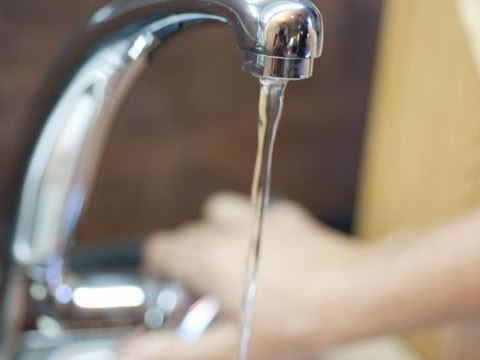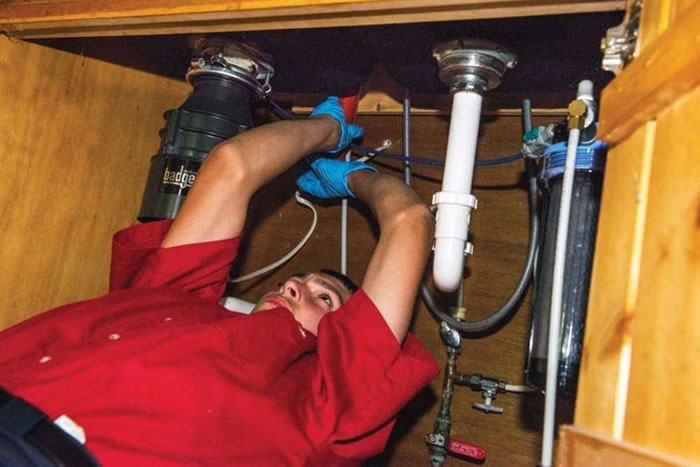Just how do you actually feel in regards to 9 Reasons for Low Water Pressure in Your House?

Low tide pressure in your house can be an irritating issue, affecting every little thing from showering to washing dishes. If you're experiencing weak water flow, there are several possible reasons and options to check out. In this overview, we'll go over typical reasons for low tide stress and useful steps to address the concern successfully.
Intro to Low Tide Stress
Low tide pressure takes place when the circulation of water from your taps, showers, and various other components is weaker than usual. This can make day-to-day jobs much more tough and less reliable. Recognizing the sources of low water stress is essential to locating the ideal remedy.
Typical Sources Of Low Water Stress
Faulty Stress Regulators
Stress regulatory authorities are in charge of preserving constant water pressure in your home. If they malfunction, it can result in low tide stress or unequal flow throughout your house.
Local Supply Of Water Issues
In some cases, the trouble lies outside your home. Municipal water problems, such as main line leakages or maintenance job, can temporarily lower water pressure in your location.
Pipe Obstructions
In time, pipes can come to be obstructed with natural resource, sediment, or debris, restricting the flow of water. This is an usual concern in older homes with galvanized steel pipelines.
Rust
Rust within pipelines can lead to leaks and minimized water pressure. Rust accumulation can restrict water circulation, especially in maturing plumbing systems.
Just How to Detect Low Water Pressure
Inspecting Pipelines
Examine noticeable pipes for signs of leakages, corrosion, or obstructions. Focus on any kind of unusual noises, such as banging or rattling pipelines, which can indicate concerns within the plumbing system.
Consulting with a Plumber
If you're not able to identify the root cause of low tide stress, think about employing an expert plumber to perform a comprehensive evaluation. They can determine underlying problems and recommend suitable remedies.
Inspecting Faucets and Fixtures
Begin by testing the water pressure at various faucets and fixtures throughout your home. If the concern is separated to certain locations, it may suggest localized troubles.
Do It Yourself Solutions to Take Care Of Low Water Pressure
Flushing Hot Water Heater
Sediment build-up in the hot water heater can restrict circulation and reduce effectiveness. Purging the container regularly helps remove sediment and maintain optimal performance.
Inspecting Stress Regulator
Make sure that the pressure regulatory authority is functioning correctly. Changing or changing the regulator can assist bring back proper water pressure throughout your home.
Cleansing Aerators and Showerheads
Natural resources can collect in aerators and showerheads, minimizing water flow. Get rid of and cleanse these elements on a regular basis to improve water stress.
Cleaning Clogs in Water Lines
For minor obstructions, try using a plumbing snake or chemical drainpipe cleaner to clear obstructions in pipelines. Be cautious when utilizing chemicals and follow security standards.
When to Call a Professional Plumber
If do it yourself initiatives fail to solve the issue or if you think substantial plumbing troubles, it's best to seek help from a licensed plumber. They have the know-how and devices to attend to complicated issues securely and effectively.
Preventive Measures to Preserve Water Stress
Installing a Stress Booster
Take into consideration installing a pressure booster pump to improve water stress in locations with regularly low circulation. This can be specifically useful for multi-story homes or residential properties with high-demand fixtures.
Tracking Water Usage
Bear in mind water use routines and avoid overtaxing the plumbing system. Straightforward adjustments, such as astonishing showers and laundry lots, can help keep appropriate water pressure.
Regular Upkeep
Schedule routine maintenance for your plumbing system to avoid issues such as deterioration, leaks, and clogs. Addressing minor problems early can aid stay clear of even more considerable fixings later on.
Final thought
Managing low tide stress can be irritating, but identifying the underlying causes and applying suitable remedies can restore ideal circulation throughout your home. Whether it's cleansing aerators, examining pipelines, or talking to a plumber, taking aggressive actions can ensure a steady supply of water for your day-to-day requirements.
FOUR WAYS TO FIX LOW WATER PRESSURE NOW
Turning on a shower or faucet only to find the water comes out in a sad, slow drizzle is never a good feeling. How exactly are you supposed to wash a pan or take a quick shower when it takes 10 minutes just to rinse off a little soap? The good news is that when your water pressure is bad, there's always a cause: typically one that can be easily fixed. Here are some of the most common causes of low pressure and what you can do to fix the issue:
DEBRIS AND MINERAL DEPOSIT BUILDUPS
If you notice low water pressure from just one or two of the fixtures in your house, the problem likely has to do with debris buildup. Water is full of minerals and other debris, all of which can accumulate in your pipes and on your fixtures. This can cause a blockage that affects how much water flows through. To fix this, try filling a small plastic bag with white vinegar, and use a rubber band to hang it around your showerhead or faucet. Let the head of the fixture soak for a few hours, and the vinegar should loosen the deposits.
WATER LEAKS
Leaks are another common cause of low water pressure. If water is flowing out of your plumbing through a hole or crack before it can reach your fixture, the pressure coming out of the faucet or showerhead will be lower. A plumbing professional is your best bet for finding and repairing a leak in your water supply pipes.
Leaks are another common cause of low water pressure. If water is flowing out of your plumbing through a hole or crack before it can reach your fixture, the pressure coming out of the faucet or showerhead will be lower. A plumbing professional is your best bet for finding and repairing a leak in your water supply pipes.
A VALVE ISSUE
If you have low water pressure throughout your home, check your main shut-off valve to make sure it's completely open. You may also want to see if there's a pressure-reducing valve installed. If there is, have a plumber help you adjust the settings to get the pressure you're looking for.
OTHERS USING WATER
Believe it or not, your low water pressure could be caused by your neighbors. If you notice low pressure at certain times of day, it may be because you and the people living next to you have similar schedules - when everyone is showering at the same time, the pressure will be lower in every home. Low pressure throughout the neighborhood may also be caused by an issue with your municipal water supply. If that's the case, call the supplier to see if they're working on the issue.
https://www.rotorooter.com/blog/water-leaking/low-water-pressure-fixes/

We are very curious about 9 Reasons for Low Water Pressure in Your House and I really hope you appreciated our page. For those who enjoyed reading our blog entry if you please remember to pass it around. We recognize the value of reading our article about 4 Ways to Troubleshoot Low Water Pressure.
Call